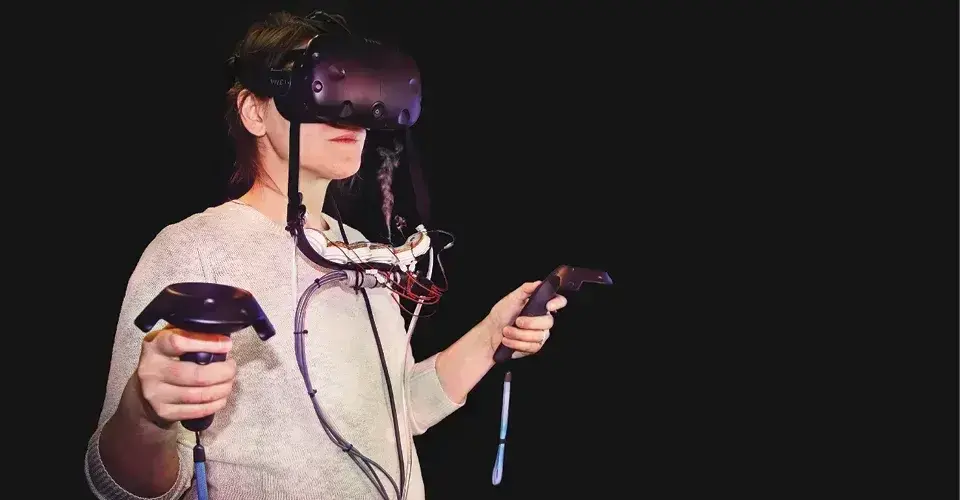Researchers Explore Use of Smells to Help Convey Visual Information
by Chris Carroll | Photo by Biswaksen PanaikFrom freshly baked bread to a natural gas leak to your grandmother’s perfume, perhaps no sense has the ability to make mouths water, signal danger or unearth memories like smell does.
Now, researchers in the College of Information Studies are trying to harness that elemental power to see if it can do more than just evoke an “ahhh” or “don’t-go-in-there” reaction, and help convey data.
In an early proof-of-concept experiment, iSchool Ph.D. student and economist Andrea Batch used a virtual reality headset to sort through a visual dataset of bitcoin transactions, represented by 3D colored spheres hovering in virtual space. A headset attachment using technology similar to plug-in room fresheners aimed various smells at her nose—a different one for each class of transaction.
“The purpose is not to increase the realism of a virtual reality environment and make you feel like you’re in an actual space—although the technology could be used to do that—but to see what kind of information it’s possible to convey with smell to enhance data visualization,” says Niklas Elmqvist, an associate professor of information studies with an appointment in UMD’s Institute for Advanced Computer Studies (UMIACS).
The VR headset-mounted version was limited to six scents, but a new tabletop version (the researchers named it ViScent) can waft a full 24 in different intensity levels toward users—from those classified as pleasantly “leafy” to the “heavy-rotten” palette that includes cadavers and feces, but also beer and eggs. Master’s student Biswaksen Patnaik is building the device to test the limits of what’s they’re calling “information olfactation” with human participants.
Smell can never replace visuals for processing data, the researchers say, but it might be able to aid in “flow” for analysts interacting with vast amounts of information. For example, in a mass of business data, “good” results might smell minty, and bad ones faintly skunky. Their findings and technology could even apply to safety applications—for instance a car flooding the cabin with the aroma of coffee if its systems sense a tired driver.
The trio of researchers were surprised at the relative dearth of published findings about people’s ability to distinguish smells, intensity levels and other parameters, and map them to visible information. They’ll be filling in that ground-level knowledge—and enduring occasional wisecracks.
“We know this is kind of amusing research,” Elmqvist says. “Smell is intrusive, in your face. People immediately start thinking about all the bad smells that could fill your living room, or worse, your office.”
Issue
Spring 2019Types
Campus Life